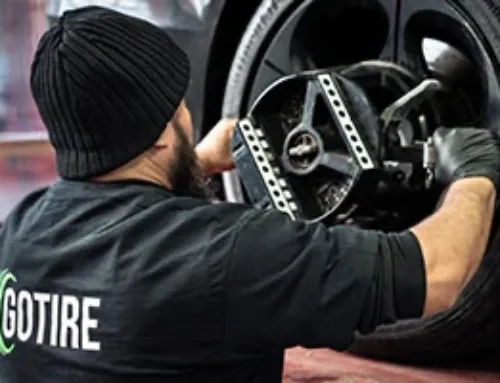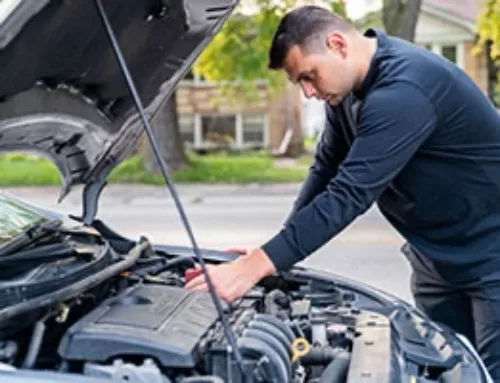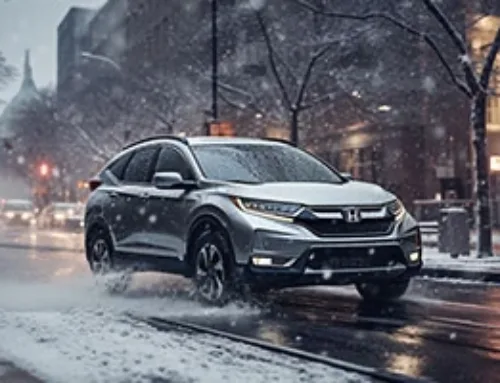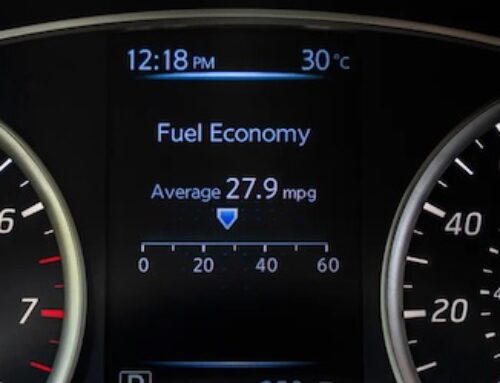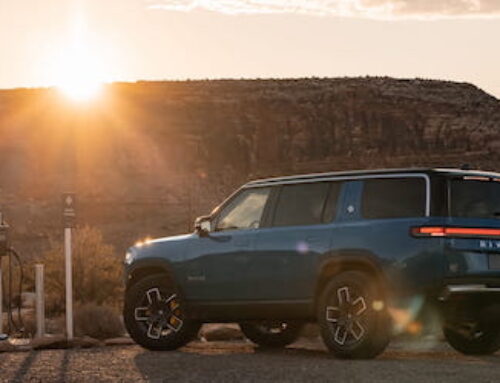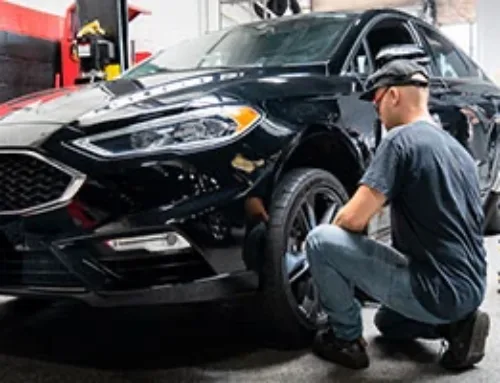Table of Contents
Driving in the rain is almost inevitable, especially if you live in states like Oregon or New York, where it rains almost half the days of the year! While the rain is great for your garden, it can be hazardous for all of us drivers, increasing accident rates. Wet weather can decrease visibility, make it harder to control your vehicle, and cause hydroplaning. To help you stay safe driving in the rain, our experts at GoTire have put together the 10 most important pieces of advice for driving in rainy conditions.

Rainy Day Driving Tips
If you get caught in a sudden shower or have to drive after a downpour, there are a few key things you can do to keep yourself safe on the roads, from slowing down to giving more space to other cars. These rain-driving tips will help prevent any weather-related accidents.
1. Turn on your headlights
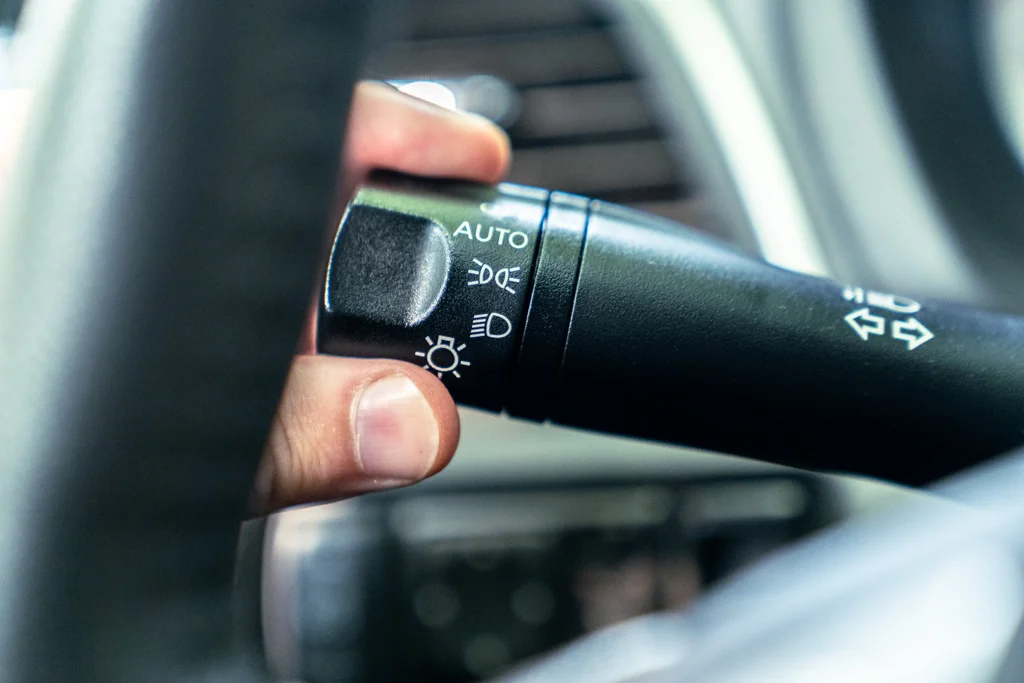
Wet weather conditions can really decrease visibility, making you harder to spot by other road users. So one of the first things you should do when it starts to rain is to turn on your headlights or fog lights (especially important in heavy rain). But don’t turn on your high beams as they can reflect off the wet road making it harder for you to see the road ahead as well as blinding other drivers.
Having your headlights on will make you much more visible to other drivers. Plus, it’s a law in many states that you must turn on your headlights when your wipers are on.
2. Use your windshield wipers

This one should be obvious, but it’s also absolutely essential—windshield wipers are vital for allowing you to see the road in front of you, so remember to turn them on as soon as it starts to rain—even light rain. And remember to check your wiper blades regularly to make sure they’re clearing your windshield properly and not leaving streaks.
3. Turn off the cruise control and slow down

If it’s raining, the road surface will be wet, reducing the traction your tires have with the road. This increases the risk of skidding, but if you drive slower this risk will be reduced. Driving more slowly also gives you more time to react if anything happens in front of you.
As well as slowing down, you should also turn off your cruise control. Avoiding cruise control is important because if you start to hydroplane or skid, your vehicle’s reaction time may be slower as your cruise control takes a second or two to disengage.
4. Keep your distance from other drivers
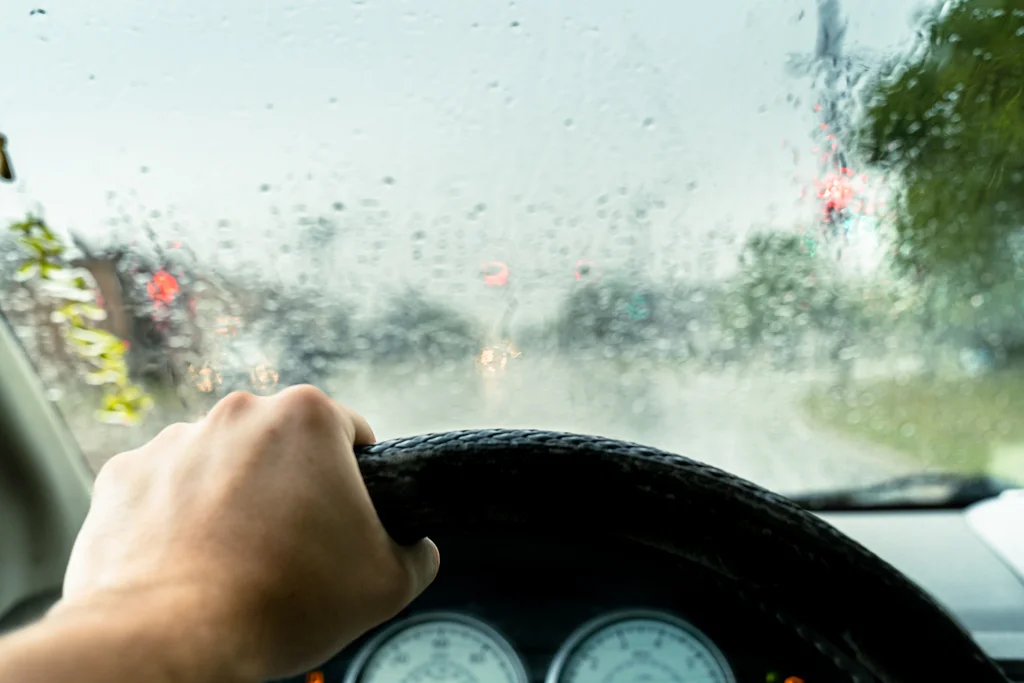
You might remember this from your driver’s ed classes, but stopping distances increase on wet roadways. You should always give plenty of space to the vehicle ahead, but this is even more true in wet weather conditions—increase the following distance or number of car lengths between you and the vehicle in front of you—make sure there are at least 3 seconds between you both.
Leaving plenty of space between you and the vehicle ahead also reduces the amount of spray from the road that ends up on your windshield, so more distance equals better visibility too.
5. Avoid hitting the brake pedal too hard

As we mentioned above, stopping distances increase in wet conditions, and you should also avoid braking too hard. When driving on wet roads, you should avoid hitting the brake pedal too hard as it can cause you to lose traction and skid or hydroplane. If you begin hydroplaning, don’t slam on the brakes either, as sudden movements like that can increase the skid. Instead, take your foot off the gas and turn the steering wheel lightly in the direction you want to go. And if you need to brake too, only do so very gently and gradually to avoid making the skid worse.
If you need to slow down, we recommend tapping the brake pedal gently a few times to turn on the brake lights and alert the car behind you that you’re slowing down in plenty of time.
Another useful braking tip is to gently apply your brakes after driving through deep-standing water, as this can get lodged in your brakes, causing them to seize up. Braking gently will clear the water so your brakes work properly when required.
6. Fill your tank
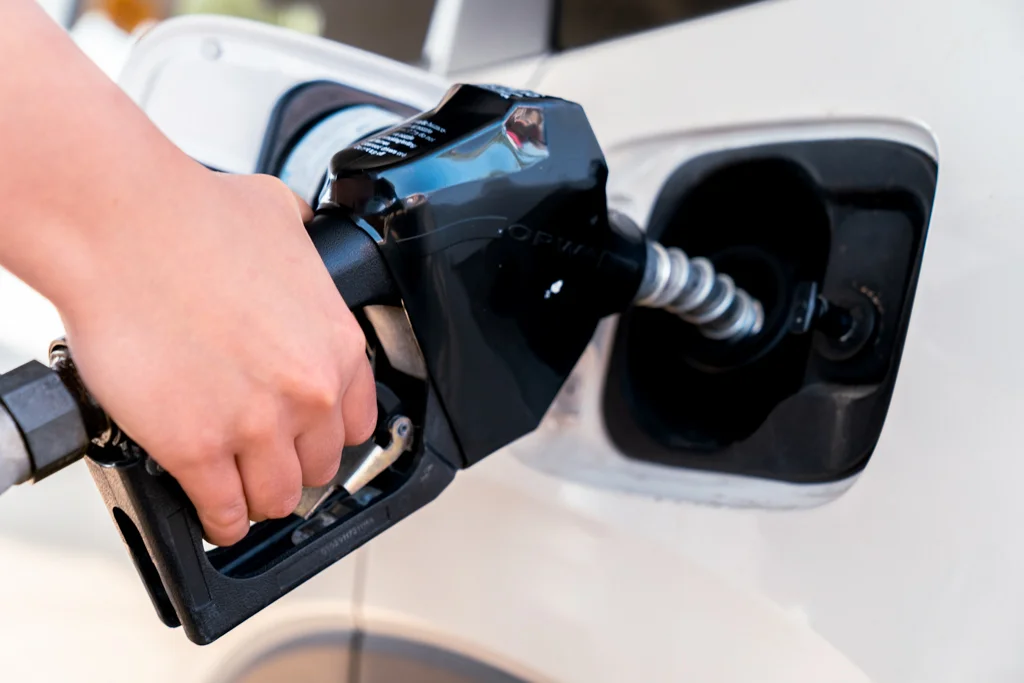
While this may not be the first thing that comes to mind, it’s always a good idea to make sure you have enough gas in your tank in bad weather conditions. You’re more likely to get stuck in traffic jams due to accidents or drivers going more slowly, and you don’t want to run out of gas if that’s the case.
Prepare Your Car Before Driving in the Rain
All the driving tips in the rain we talk about above should prepare you for sudden showers and inclement weather, but what can you do in advance to make driving in the rain as safe as possible? Here are a few safety precautions you can have in place at all times.
7. Check your tires

It’s always important to make sure your tires are in good condition, but that’s doubly so when driving in the rain. The most important factor is to make sure your tires have enough tread depth to handle wet roads. While the minimum legal requirement for tread depth in most states is 2/32″, and this might be adequate in dry conditions, we recommend you maintain at least 4/32″ if you are ever likely to be driving on wet roadways.
Research has found that tires with less than 4/32″ are much more dangerous than those with more tread depth. at less than 4/32″, around 50% of friction may be lost, which is very dangerous. This greatly increases the risk of hydroplaning, which can very easily lead to accidents. So to help avoid hydroplaning, we strongly recommend replacing your tires if they have 4/32″ or less of tread depth remaining.
Another thing you can do to make sure your tires make the right amount of contact with the wet pavement is to check your tire pressure regularly and ensure it meets your manufacturer’s recommendations.
If you need new tires, check out GoTire, where you’ll discover the best prices on top name-brand tires, all with free shipping using FedEx, straight to your door.
8. Replace your wiper blades
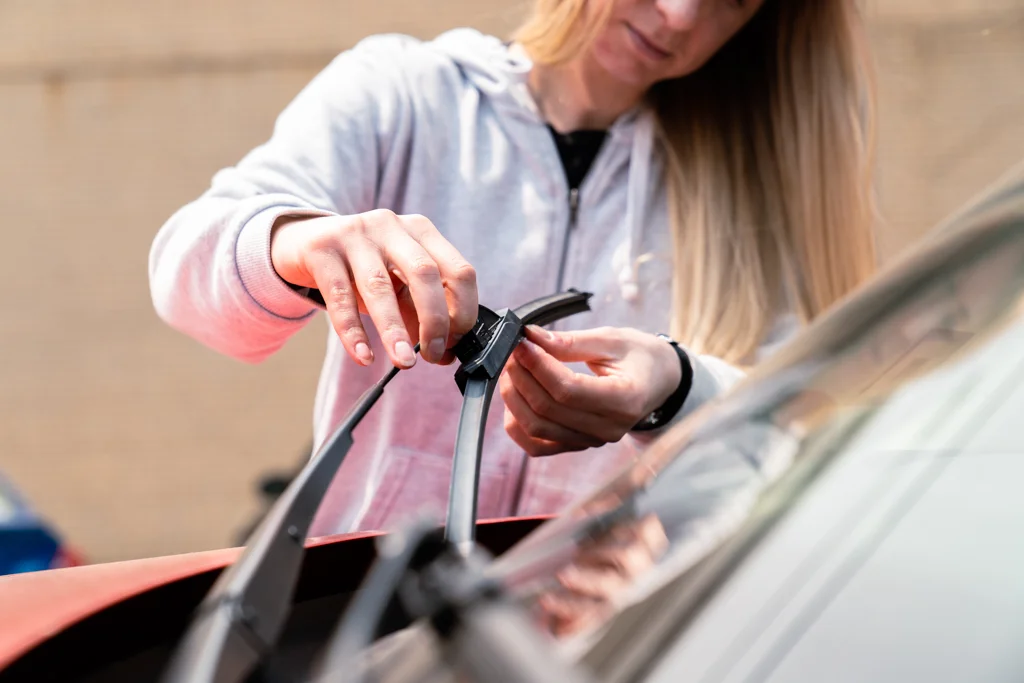
While you might not notice the condition of your wiper blades if you live somewhere that doesn’t often get rain, it’s important to check them and make sure they are in good condition before you get stuck in a major downpour. They are essential for maintaining visibility when it starts to rain. So, if your wiper blades are leaving streaks or not clearing the windshield properly, it’s time to replace them.
We recommend you change your wiper blades at least once a year—or if you live somewhere with cold winters and lots of ice and snow, you should change them twice a year, at the start of the summer and winter seasons. It’s also important to note that the blades of your wipers can harden up and become inflexible if they are left for a long period of time—so if your car hasn’t been used for a while, especially if it’s been parked outside, check your wipers when you start to use it again.
9. Treat your windshield
This might not be for everyone, but if you’re an expert rain driver, like the original Rainman, Ayrton Senna, and regularly drive in bad weather and rain, you might want to consider treating your windshield with a water-repellent coating. Products like Aquapel will help improve visibility in the rain by causing water to bead up and roll off your windshield, making it easier to see the road ahead.
10. Maintain your air conditioning and heating

When it’s wet outside, you probably notice that your car windows get fogged up much more quickly, making it hard to see outside. Using your ventilation system, air conditioning, and heating can help clear up your windows, pulling out the moisture that creates the fog and dehumidifying your vehicle’s interior. So it’s important to make sure your A/C and heating are working properly for those rainy days.
Don’t let the best tire deals & tips roll by!
Sign up for our newsletter
Frequently Asked Questions
Is it OK to drive in the rain?
Yes, it is OK to drive in the rain, and many people do this every single day. However, it’s important to use some common sense and take extra precautions in order to drive safely in the rain. Remember to slow down, keep a considerable distance between you and other cars on the road and turn on your headlights and windshield wipers when it begins to rain.
What to do when driving in the rain?
When driving in the rain, there are a few important things you should bear in mind, including turning on your headlights and using your windshield wipers. It’s also important to drive more slowly than in regular driving conditions and to leave more space between you and other vehicles than on dry roads. In slippery conditions, you should also be careful to avoid making any sudden moves like slamming on your brakes or turning suddenly, if at all possible.
How much harder is it to drive in the rain?
Driving in the rain can be significantly harder than driving on dry roads. Wet roads reduce tire traction, making it harder to control your vehicle. Rain can also make it harder to see the road and other vehicles, which is why it’s important to drive slowly and give plenty of space to other cars.
Rainy conditions can also lead to hydroplaning, which occurs when a layer of water builds up between your tires and the road, causing your vehicle to lose contact with the road surface. This can result in a loss of control and potentially cause an accident. It is important to take extra precautions when driving in the rain to reduce your risk of accidents.
When driving in heavy rain, what should you not do?
When driving in heavy rain, don’t make any sharp movements, such as sudden braking or swerving, if at all possible, as this can cause your vehicle to lose control and skid. You should also avoid driving through standing water, as this can cause your vehicle to hydroplane. Both of these things are major causes of car accidents. It’s also even more important than usual to stay focused on the road, so you should avoid any distractions such as making phone calls or adjusting the radio.
How can I be comfortable driving in the rain?
You can be more comfortable driving in the rain if you follow these simple tips. Firstly you should reduce your speed, as wet roads are slippery roads. Remember to turn on your wipers and headlights so you can see and be seen by other road users. You should also turn on your air conditioning or heating to dry out the air inside your vehicle and stop your windows from fogging up.
Another important thing to do is to give yourself plenty of space between your car and the car in front of you. This will give you more time to react if the car in front stops suddenly. And finally, try to avoid any sudden movements like sharp turns, sudden braking, or accelerating, as they can cause your car to skid.


